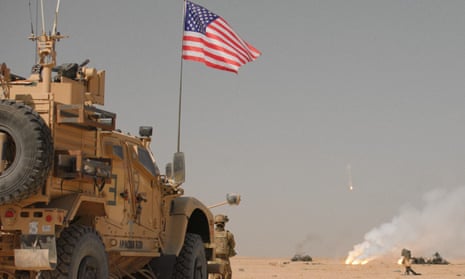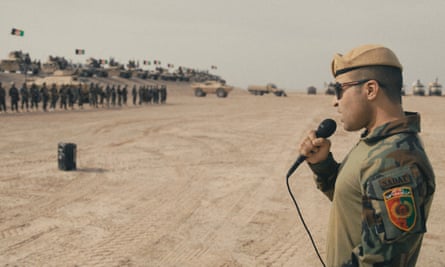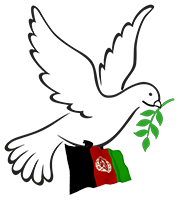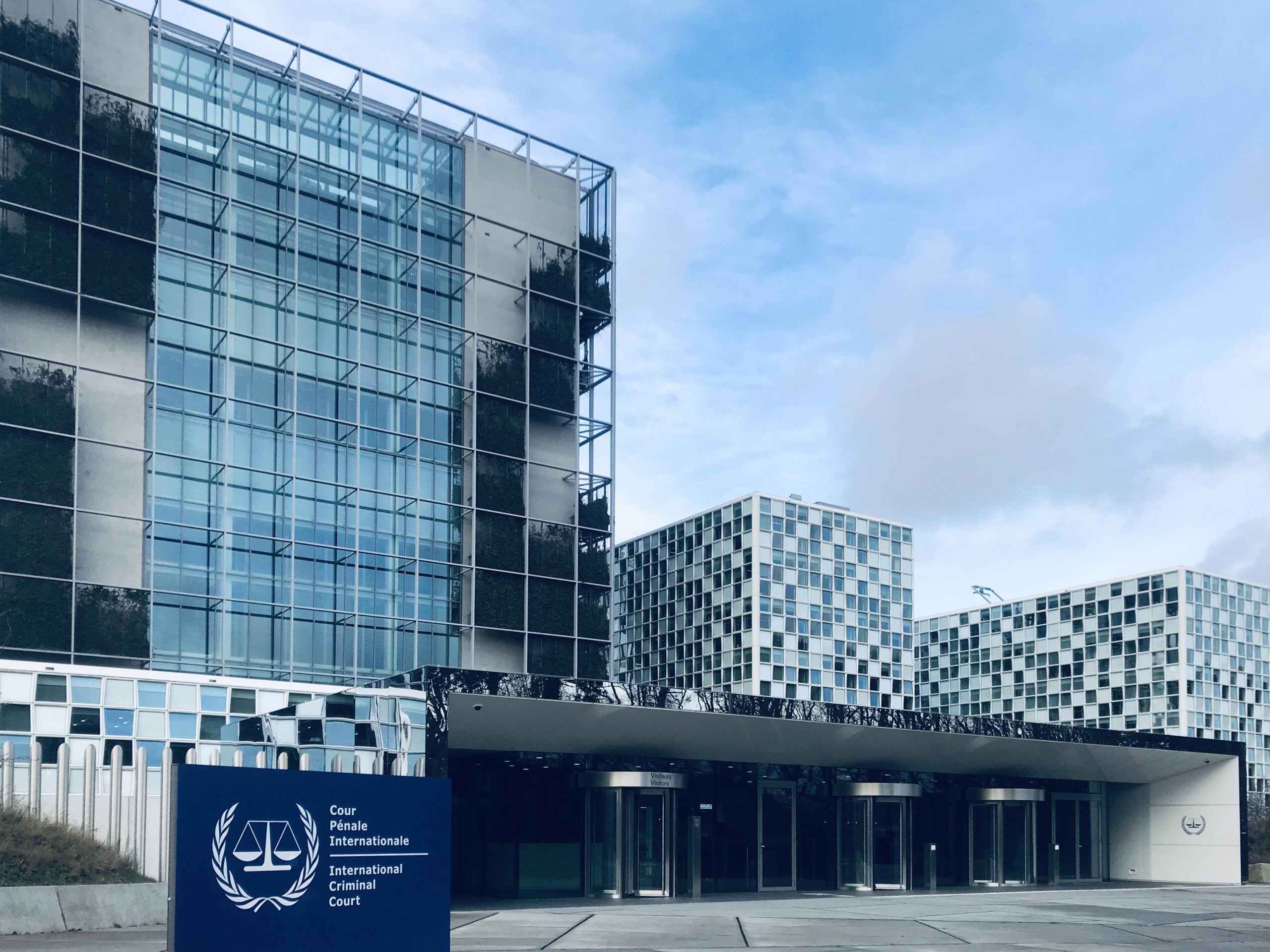The resumption of the Afghanistan investigation was authorised by the three judges of the ICC Pre-Trial Chamber II (hereafter ‘the judges’) on 31 October 2022. This was needed because the former government had requested a deferral, saying war crimes were being investigated in domestic courts and there was no need for the ICC to be involved. Following the overthrow of the Republic, the current ICC prosecutor, Karim Khan, had argued that this deferral request should be set aside.
The latest ruling by the judges is their response to Khan’s request for a resumption of the investigation, made in September 2021. It has taken them 13 months to reach this decision. However, their ruling sets limits on the scope of any investigation to: 1) crimes allegedly committed by actors who were mentioned in the prosecution’s original 2017 request to launch an investigation; and 2) crimes committed only up to the time when the authorisation was finally granted in 2020. After eight days of silence, on 7 November 2022, Khan responded to this ruling. He announced his disagreement with the restrictions and launched an appeal, which the ICC’s Appeals Chamber will hear at some future date.
Despite all this, the judges’ 31 October ruling is a milestone in the court’s dealing with Afghanistan, which for a decade and a half has continued to take a long and winding course, with multiple setbacks, delays and periods of waiting for decisions:
2006 The Office of the Prosecutor of the ICC begins a preliminary examination of war crimes and crimes against humanity in Afghanistan (see AAN report).
2017 The then prosecutor, Fatou Bensouda, requests the judges of the Pre-Trial Chamber to authorise an investigation (see AAN report).
April 2019 The judges turn down her request (see AAN report).
September 2019 The prosecution appeals the April 2019 decision of the judges (see AAN report).
March 2020 An appeal ruling finds in favour of the prosecution and an investigation is launched (see AAN report).
March 2020 The former government blocks the investigation by requesting a deferral, arguing that the alleged crimes were already being investigated domestically (see AAN report).
27 September 2021 New prosecutor Karim Khan requests the judges to reject Afghanistan’s deferral request and resume its investigation, but with a narrower focus than Bensouda had asked for – just the Taleban and ISKP – and for other actors (the CIA and US military and the Republic’s armed forces and intelligence agency) to be ‘de-prioritised’ (see AAN report).
31 October 2022 The judges grant Khan’s request, but stress the investigation should be according to the 2017 request.
7 November 2022 The prosecution appeals paragraph 59 of the judges’ decision which limited the scope of the investigation.
This report will first look at the bases for the judges’ decision to re-authorise the investigation, then look at two questions about the scope of the investigation into war crimes related to Afghanistan. First, will it include the CIA, US military and forces of the Islamic Republic, as well as the Taleban? Second, will it include the ISKP and alleged crimes in the post-March 2020 period? Finally, we conclude by looking at what happens next.
How the judges argued that the investigation should be resumed
The judges were asked to rule on how to respond to the deferral request of the old government and the prosecutor’s 27 September 2021 request to reject it and authorise the resumption of the investigation. They provided three arguments for authorising the reopening of the investigation:
- “Afghanistan is not presently carrying out genuine investigations” of war crimes and crimes against humanity coming under ICC jurisdiction.
In his September 2021 request, ICC Chief Prosecutor Karim Khan said his office was in possession of “undisputed facts” demonstrating that since the fall of the Republic, neither the Taleban as the de facto rulers of Afghanistan nor the fallen Republic whose diplomats still represent Afghanistan abroad were investigating the alleged crimes. The judges of the Pre-Trial Chamber echoed Khan in their ruling: the laws and mechanisms established by the Republic for domestic investigation were abolished after the Taleban takeover.
- Afghanistan “has not acted in a manner that shows an interest in pursuing the Deferral Request.”
Afghanistan could have challenged the ICC prosecutor’s request since its submission in September 2021 to cancel its request to defer the ICC investigation. Indeed, said the judges, it had been provided “ample opportunity,” through all possible legal means, to share its “observations.”
However, the judges said neither the Taleban nor the diplomats of the fallen Republic had opposed the prosecution’s request. Three times, the judges said they had invited a response and there had been nothing but silence from the Taleban and ambiguity from the Republic’s diplomats. The two diplomats who had reacted, the judges said, had neither clearly opposed nor supported the prosecution’s request. That could have been because of their lack of decision-making power; the Afghan ambassador to the Netherlands, who is also the Afghanistan permanent representative to the ICC, wrote to the judges in March 2022 that he was “unable to provide any further observations or submissions” due to “security and political developments” in Afghanistan since the fall of the Republic.
As for the Taleban, it could be said that there was no guarantee they would have been listened to even if they had opposed the reopening of the investigation due to their lack of international recognition. (AAN has reported in detail about the judges’ failed attempts to seek ‘Afghanistan’s’ views).
- The information and supporting documents provided by the Republic in its deferral request, in themselves, “cannot lead to a finding that the ICC investigation must be deferred.”
In March 2020, the Republic had said it was able and willing to investigate war crimes domestically and so there was no need for an ICC investigation. Thus, the investigation had been put on hold until either Afghanistan proved its claim by providing tangible and detailed evidence of its investigations or the ICC prosecution proved otherwise.
After assessing 1455 documents submitted by the Republic concerning 518 cases which it claimed were evidence of domestic proceedings, the judges found that only 67 cases were “substantiated and relevant” and could be overlapped with the ICC’s investigatory scope. All “concern[ed] (alleged) members of the Taliban.” Of these, “only 11” were of “mid- or top-level perpetrators.” The Republic, the judges said, had not “adequately substantiated its Deferral Request” and had failed “to provide sufficient documentation demonstrating active and ongoing investigations or prosecutions.”
AAN has argued that the main aim of the Republic’s deferral request was to block the investigation and that it had never been serious about investigating war crimes itself.
The scope of the ICC’s investigation 1: the CIA, US military, the forces of the Republic
One of the key questions for AAN and others was whether the judges would agree with Prosecutor Khan’s contention that the ICC’s investigation should be limited to only the Taleban and ISKP, or also include the CIA and US military and the former government’s forces, as his predecessor Fatou Bensouda had requested in 2017. Khan contended in September 2021 that if an authorisation was granted, he wanted to ‘de-prioritise’ some aspects of the investigation because of the limited resources available to his office. In an online meeting with human rights activists, at which the author was present, in November 2021, Khan did subsequently say that de-prioritisation did not mean no investigation, but still, it was difficult to envisage other actors becoming the focus of the court in the distant future.
The author reads the judges’ 31 October decision as a signal to the prosecutor that he should not de-prioritise investigations into the personnel of the US or the Republic, which were authorised in 2020. They did indicate that the prosecutor was not under any obligation from them to pursue either a narrower or a broader investigation, but they did highlight the concerns of “certain victims” who “fear that this focus may result in the Prosecution overlooking crimes allegedly committed by others, including members of armed forces or security and intelligence services of non-State Parties (to the ICC like the US).”
The judges here might be indirectly reminding the prosecutor of his obligation to fulfil “the interests of justice” which would be achieved, among other ways, by fulfilling the interest of all victims. The court collected their views twice, from 11,150 individual victims and 130 families from 8 November 2021 to April 2022 and 6,220 individual victims and 1,690 families from November 2017 to January 2018. On both occasions, the vast majority wanted the ICC to investigate (see AAN report on the first round). The legal representatives of some victims also made representations following Khan’s request to de-prioritise some investigations. For example, lawyers for three men allegedly held by the CIA said in a response published on 7 October 2021:
The gravity of the crimes which took place within the secret CIA detention facilities in Afghanistan, Poland, Lithuania, Romania and other countries, including by nationals of States Parties, as well as the manifestly ineffective nature of national proceedings, call into question the Prosecutor’s deprioritisation of those crimes. These factors rather justify the Prosecutor’s focus on and prioritisation of investigation of these grave and widescale crimes.
Katherine Gallagher of the Centre for Constitutional Rights, who represents two alleged victims of torture by the CIA at its black site rendition facilities, also said in September 2021 that Khan’s proposed narrowing of the investigation would be “a real problem both because it undermines investigations and because it’s a backdoor way for member states to control the court through the budget.”
At the time, AAN expressed concern that Khan’s request created a ‘hierarchy of victims’, while Human Rights Watch pointed to “double standards” and Amnesty International said his strategy risked the legitimacy of the whole ICC:
In his stated approach, Prosecutor Khan appears willing to bow to political as well as resource pressure, applied by powerful states, whose actions would restrict the activities of a ‘universal’ ICC which may investigate situations where their nationals and interests are affected.
We recall that, until April this year [2021], US government sanctions were applied on Former Prosecutor Fatou Bensouda and other [Office of the Prosecutor] staff with the overt intention of halting investigations into US nationals – despite the Court having clear territorial jurisdiction to do so. Having faced-down the US government’s egregious attacks, that the Prosecutor would take a decision which aligns with the objectives of those who had sought to infringe his Office’s hard-fought independence, is almost unfathomable.
Whatever the reason for the judges’ message that Khan should include all actors mentioned in the 2017 request in his investigation, those concerned about universal human rights will welcome their stance.
The scope of the ICC’s investigation 2: ISKP and post-March 2020 war crimes
The judges, in paragraph 59 of their decision, reminded the prosecutor that, in their view, the authorisation to investigate covers:
[O]nly the crimes falling with the situation and the conflict, as it existed at the time of the decision authorising the investigation [2020] and based on the request to open it, can be the object of this investigation. Alleged crimes unrelated to such situation and conflicts or related to any new armed conflict(s)… and new parties to such a conflict, fall outside the scope of the investigation as authorised…
In this paragraph, the judges footnoted their reference to “new parties”:
Compare, e.g., the Prosecutor’s reference to the ‘Islamic State – Khorasan Province’ in his 27 September 2021 press statement.
To investigate any alleged crimes and actors as well as new crimes related to new conflicts which they believe fall outside the scope of the investigation, the judges suggested the prosecutor file a new request for authorisation.
In Khan’s appeal, the prosecutor seems to understand from the judges’ argument in paragraph 59 and the related footnote that they see ISKP as a ‘new actor’ and also that any alleged crimes which have been perpetrated since March 2020 as “unrelated” to the authorisation and therefore as falling outside the investigation. Khan argues that such a restriction was an error in law, and an error in fact, and as contradicting the April 2020 appeal judgement which had granted authorisation. Thus, the prosecution has requested the Appeals Chamber “to reverse and amend paragraph 59 of the Decision and to confirm the scope of the Court’s jurisdiction in this situation in the terms previously articulated by the Appeals Chamber.” The prosecutor said his appeal would not affect the resumption of his investigation into those alleged crimes which the judges’ 31 October decision has permitted.
According to Khan, paragraph 59 of the 31 October authorisation was an error in law because it violated the Appeals Chamber’s 2020 judgement, which said the scope of the investigation was not limited to the incidents provided by the prosecution in its 2017 request for authorisation. Also, the 2020 appeal judgement set no temporal limitation except the one mentioned in the prosecution’s 2017 request, which mandated the beginning of the investigation period as 1 May 2003, the date when Afghanistan became a state party to the Rome Statute, for alleged crimes that took place on Afghan soil and 1 July 2002 for alleged crimes that happened on the territory of other states parties to the ICC which were related to the Afghanistan armed conflict, ie those hosting CIA detention facilities related to the Afghanistan conflict, Poland, Lithuania and Romania.
The judges’ April 2019 decision not only rejected outright the prosecution’s 2017 request to launch an investigation – based on what was found to be an erroneous calculation that an investigation would be against the ‘interests of justice’ – but also set a standard for the scope of any investigation in the following paragraph, in which the judges said they were:
[D]uty-bound to determine in concrete terms whether the investigation of the specific incidents for which the authorisation is sought, and those which are closely linked to the former, must be allowed. Accordingly, the scope of the scrutiny could not encompass incidents and groups of offenders other than those for which the authorisation was specifically requested. Quite logically, the same applies for other alleged crimes that may have occurred after the date of the Request.
However, when the Appeals Chamber overturned the judges’ decision in 2020, they found that the judges’ ruling that any investigation should be restricted was an error in law and unnecessary, as it would impact the “truth-seeking function” of prosecution.
[T]he Appeals Chamber considers that restricting the authorised investigation to the factual information obtained during the preliminary examination would erroneously inhibit the Prosecutor’s truth-seeking function. Such a restriction is also unnecessary to fulfil the purpose of article 15(4) of the Statute in ensuring that the Prosecutor does not embark on a frivolous or politically motivated investigation in that she remains restricted in her investigation to the contours of the situation authorised by the pre-trial chamber. Therefore, the Appeals Chamber considers that authorisation for an investigation should not be restricted to the incidents specifically mentioned in the Prosecutor’s Request and incidents that are ‘closely linked’ to those incidents in the manner described by the Pre-Trial Chamber.
In other words, both prosecutors and the Appeals Chamber have held the view that the judges’ attempt in 2019 to restrict the scope of any investigation was not in accordance with the provision of articles 42, 54 and 58 of the Rome Statute, the ICC founding document, which ensures for independent and objective investigations and prosecutions by the Office of the Prosecutor of the ICC.
Furthermore, according to Prosecutor Khan’s current appeal, paragraph 59 of the judges’ 31 October decision, when it referred specifically to the ISKP as a ‘new actor’ to the conflict, was an error in fact. He said this was a “misreading” of the 2017 request. In that request, he said, it was “expressly clarified that the scope of the investigation included both subsequent crimes and crimes committed by the group known as ‘Islamic State-Khorasan province’, among other groups.” In other words, although the main emphasis was on the Taleban and Haqqani network, the US CIA and military and the forces of the then government, ISKP was also mentioned. It cannot be considered a new actor, therefore.
As explained above, this disagreement over the scope of any investigation is an old fight between the prosecutors and the judges. However, the Appeals Chamber decided in favour of the prosecution in March 2020. Knowing that, it is odd that the judges have yet again brought up an old dispute that had been resolved two and a half years ago.
By appealing paragraph 59 of the judges’ decision, Khan is attempting to regain the prosecutor’s investigatory power over alleged crimes that have occurred – and will occur – since the ratification of the Rome Statute by Afghanistan. They include alleged war crimes reported during the Taleban takeover of power in August 2021 and since. (See Human Rights Watch report and Amnesty International report as examples). It also intended to be able to investigate all alleged actors, including ISKP which has claimed responsibility for many grave crimes, including those the Hazaras and Sikhs (see this AAN report, Human Rights Watch report and the UN Special Rapporteur on Human Rights Situation in Afghanistan’s first report for examples).
What happens next?
The ICC prosecutor has appealed the part of the judges’ decision which says no authorisation to investigate crimes allegedly perpetrated since March 2020 and/or by ‘new actors’ like ISKP which the judges assert were not named in the 2017 request of the prosecution, although the prosecutor contends this. When the appeal hearing will happen has not been publicly announced yet. However, in light of the March 2020 Appeals Chamber decision, the result of the prosecution’s appeal is foreseeable. The Appeals Chamber articulated then that the prosecution’s investigation should not be restricted to the incidents and alleged perpetrators which were prominent in the prosecution’s 2017 request for authorisation to investigate. On the basis of that decision, it is the author’s understanding that to investigate any new conduct and/or actor should not require a new request of authorisation.
For the next couple of weeks, the judges’ decision of 31 October is anyway preliminary: under article 18 (2) of the Rome Statute, Afghanistan has a month to challenge it. The Afghan embassy in the Netherlands, as the agreed-upon diplomatic channel between Afghanistan and the ICC, was notified of the judges’ decision on 31 October 2022. Asked by AAN about his intentions, ambassador Muhammad Asif Rahimi said on 2 November 2022 that the embassy had always supported justice, reparation for victims and prevention of atrocities and he hoped the ICC would be able to satisfy Afghan war victims and the Afghan nation with its impartial and holistic efforts. He confirmed that the embassy would not take any further action instead would wait for the positive efforts of the ICC and its prosecution.
The Taleban have not reacted to the ICC decision, as yet. Even if they did respond, it is not clear how their action would be received, legally, by the ICC as they have not been internationally recognised as Afghanistan’s government. Article 19 of the Rome Statue provides “Afghanistan’ with the right to challenge specific cases during the investigation, as was mentioned by the judges in their decision.
After that, even as the appeal request proceeds, the prosecutor can resume his investigation of the crimes allegedly perpetrated up to March 2020 by four main actors, namely the Taleban, the Haqqani network, the US military and CIA, and the forces of the Republic, which the judges have authorised. Karim Khan could still go with his de-prioritisation investigatory strategy, however. The judges’ emphasis on not de-prioritising the aspects of the investigation, which cover the allegations against members of the US military and CIA members of the former government’s security forces, has no legal implications for the prosecution.
How the prosecutor pursues his investigation has yet to be publicly shared. With an unrecognised, de facto government in power which is one of the main alleged groups, it looks unlikely that the prosecutor would be able to open an office on the ground. Investigating incidents with no on-the-ground access would be difficult. However, this aspect of the investigation was always going to be complicated, even during the Republic, which always publicly acknowledged its support to the ICC, while trying not to give any actual support, and when there was also a widescale and ongoing armed conflict. However, there are enough alleged victims living outside Afghanistan, some already with lawyers and detailed evidence, that an investigation should still absolutely be possible.
Edited by Kate Clark



 Afghanistan Peace Campaign
Afghanistan Peace Campaign
 The ICC’s Afghanistan war crimes investigation has been authorised by the court’s Pre-Trial Chamber. Photo: Ehsan Qaane
The ICC’s Afghanistan war crimes investigation has been authorised by the court’s Pre-Trial Chamber. Photo: Ehsan Qaane
